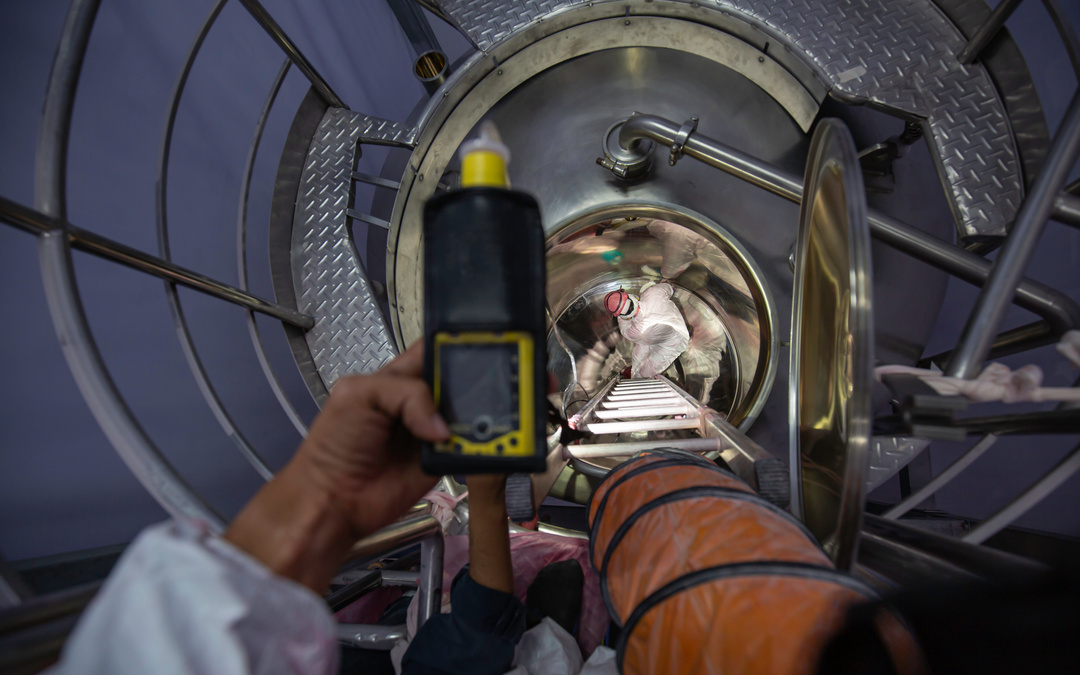Reducing The Risk Of Engulfment Hazard In A Confined Space
Reducing The Risk Of Engulfment Hazard In A Confined Space
October 18, 2022 |
Depending on the industry, certain types of hazardous situations may be faced occasionally or constantly. Confined space is one such situation that some workers are required to function in daily. A number of OHS risks (Occupational Health & Safety) are faced by such workers. Within confined spaces, one of the most common causes of deaths and injuries is an engulfment hazard, depending on the environment.
When engulfment hazards present themselves, protection of employees is the first and foremost concern of any employer. Within confined spaces, to protect your employees, engulfment is one of the key issues that must be addressed. Within the workplace, how does one address such issues?
What Is Meant by Engulfment?
Engulfment refers to situations in which liquids, grain, or some other type of bulk materials trap an individual. Engulfment consequences of a more serious nature include potential crushing and/or asphyxiation.
- When liquids come into play, drowning will cause asphyxiation.
- When dry materials are present, breathing difficulties can be caused if their chest is crushed, their airway is clogged, or their oxygen flow is generally blocked.
Engulfment can become a significant risk in roughly 3 key scenarios:
- When certain materials are stored in confined spaces, as the substance shifts underneath, bridges and crusts can form. The weight of a worker walking across this bridge or crust could cause it to dislodge or crack. Engulfment could be the result.
- When, from tanks and pipes, materials must be unblocked by employees, unsuitable practices or positioning can lead to dislodged grain falling on the worker (or some other type of hazardous situation).
- The repair and maintenance of machinery is extremely important. If, for any reason, a worker was to enter an empty silo or tank and a system was faulty, into the space the worker occupied, materials could unexpectedly be released. This would spell disaster.
Spaces That Are Safer
To truly minimize the risk of engulfment, numerous practices can be applied. Naturally, if you could avoid entering a confined space altogether, that would be the most effective plan.
Confined spaces might not have to be entered into with the appropriate silo and tank design. In support of this idea, installation of feeds and access lines from a tank’s exterior are required for manufacturers (whenever possible). Without the risk of engulfment, confined spaces can be accessed, cleaned, and/or unblocked by employees who have external access points.
When Confined Spaces Are Unavoidable
The above-stated scenario is a great idea, but not always applicable.
The right employee training and the appropriate permits are required by employers when work in a confined space must be done in order to improve OHS outcomes. This applies to any worker who has to be in the area, even for a short time. With better knowledge of the confined space hazards and risks in existence, employees can be more comfortable executing their tasks – and when the proper permits are in place. A range of specific factors must be taken into account before permits are offered including:
- Maintenance and quality of the equipment
- Materials contained within the space
A complete understanding of a number of factors by each individual must be possessed before they can work in a confined space. This involves confined space training, which introduces employees to the following:
- If an emergency occurs, understand best practice procedures
- The risks faced by working in a confined area
This includes any required potential rescue items and use of PPE (personal protective equipment).
Rescue Solutions Can Help Reduce the Risk of Engulfment Hazards
Whether you want to have the best emergency response team in the area, or you’re concerned that the safety equipment/training you employ may not be sufficient, Rescue Solutions can be of assistance.
Rescue Solutions is the most highly reviewed and rated rescue training, emergency rescue equipment, and safety company in the region. We are committed to the creation of safer work environments. We make working life better for your team. We understand how important it is for everyone to go home to their friends and/or families at the end of the workday. For more than 100 years, Kentuckians have stayed safer at work using our solutions.
You will receive assistance that applies to real-world scenarios and meets all regulatory compliances when you work with Rescue Solutions. When your business needs safety training, rescue equipment, or rescue training – or safety and rescue services – you can count on us. We’re here for you and your employees.
Got questions? Would you like to speak to a representative? Feel free to contact us by using our convenient online form, or phone us at 859-412-1512. We look forward to speaking with you.
